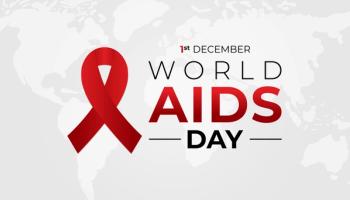CAPELLA Trial Overview and Optimization of Novel Therapies
Drs McCray and Peskin provide an overview of the CAPELLA trial.
Episodes in this series
Eugene McCray, M.D.: The CAPELLA trial findings demonstrated that this drug, lenacapivir, when administered subcutaneously every 6 months in combination with other antiretrovirals, achieved a high rate of virologic suppression. It showed some clinically meaningful responses like an increase in CD4 counts in people living with HIV [human immunodeficiency virus] and so forth. I and many of us in the HIV community are really encouraged by the results showing positive outcomes associated with this drug. It would be amazing if this drug was eventually FDA [Food and Drug Administration] approved and people could be given a six-month or even once-a-year injection for the treatment of HIV. This would be a remarkable achievement for people living with HIV, and I think it would really help.
With that said, I think we need to continue to make sure there are other options available because some people cannot take injections or won’t take injections. So, the potential for long-acting antiretroviral treatment that is administered only once or twice a year is key. There are other products out there that being looked at. So, I’m really excited about some of the potentials that are out there, and I think we’ll be talking about some of that later.
When novel therapies become available, the communities that need them the most have the least access, and the drugs are least available to them. PrEP [pre-exposure prophylaxis] was a good example. For these novel therapies to be optimized, there have to be programs specifically targeted to the highest impact communities, especially communities of color like African Americans, Latinos, transgender communities, etc. And to do that, it’s going to have to be a concerted and directed effort. Insurance is also important, so working with insurers to make sure that once the drugs are FDA approved, they will pay for these drugs, and so forth.
The third component is the pharmaceutical companies themselves. Many of these companies tend to have what they call patient assistance programs. When you have no resources or minimal resources, you can get access to these drugs through a patient assistance program. Those are sometimes very complicated and complex, but I think those programs need to be made more accessible. Thinking about how we can get these therapies to the people who need them most is going to be critically important, and there are some important ones that are going to be coming down the pipeline very soon, including potentially a vaccine.
Some of these are ongoing, and I don’t mean to imply that they’re not. But there are a number of things that are being done to educate both providers and communities about the importance of treating and managing MDR [multidrug-resistant] HIV. Some of those initiatives are information and education campaigns that are targeted to communities, providers, and others. The other thing is working with funders, foundations, and others to make sure they are willing to support some of the ancillary services that will be needed for people who get access to these novel drug targets. Because sometimes what happens is some drugs are not FDA approved but they become available through compassionate use or another program. When that happens, many times ancillary services like laboratory tests and counseling and things patients may need are not covered. Making sure funders and payers understand that and help to pay for it will optimize and help prevent some of the emergence of resistance in these patients by making sure they are able to stay on these drugs.
Steven Peskin, M.D., MBA, FACP: With respect to new therapies, novel therapies, it’s certainly an area where we continue to make great strides in HIV, thankfully, and the biopharmaceutical industry continues to innovate in this area. The HIV drugs tend to be covered, what I would call liberally, with fewer restrictions with regard to prior authorizations, step throughs, step edits, those sorts of things. As far as the patient cost burden, there certainly are some variabilities from, say, a bronze Affordable Care Act plan versus say someone who maybe is covered by a state or municipal government, which tend to have richer plan designs and benefits.
With HIV, generally speaking, as innovative therapies are developed and approved by the United States Food and Drug Administration, those products will be available on formularies. Sometimes there’s some appropriate time for review by pharmacy and therapeutics committees. We have seen situations where something is approved and then six months later it’s withdrawn for some safety signals, cardiovascular, peripheral neuropathy, and other kinds of things. In the area of HIV, the innovation is in a sense rewarded with rapid access for persons who have HIV. Then for those persons who are showing multidrug resistance where newer agents are appropriate, those products will be available through health plans and PBMs [pharmacy benefit managers].
Transcript edited for clarity.
Newsletter
Get the latest industry news, event updates, and more from Managed healthcare Executive.






















































